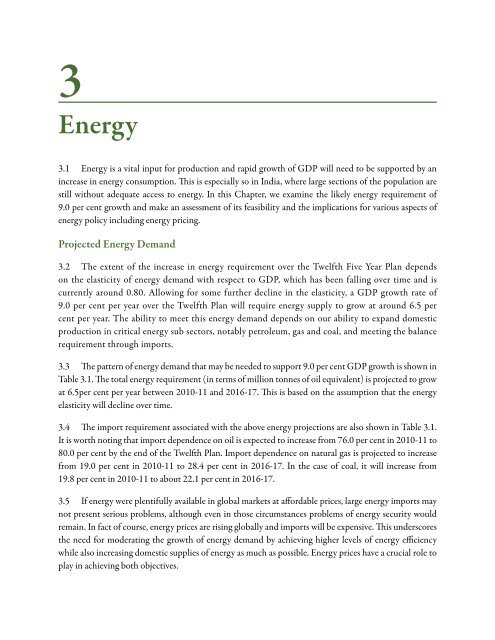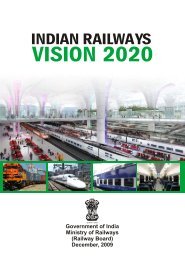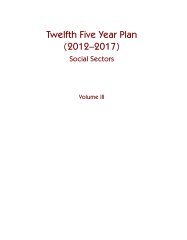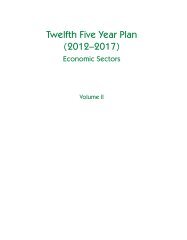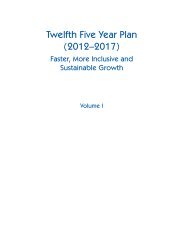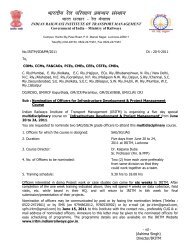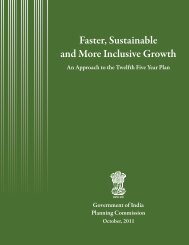Approach 12 FYP - Indian Railways Institute of Transport Management
Approach 12 FYP - Indian Railways Institute of Transport Management
Approach 12 FYP - Indian Railways Institute of Transport Management
You also want an ePaper? Increase the reach of your titles
YUMPU automatically turns print PDFs into web optimized ePapers that Google loves.
3<br />
Energy<br />
3.1 Energy is a vital input for production and rapid growth <strong>of</strong> GDP will need to be supported by an<br />
increase in energy consumption. This is especially so in India, where large sections <strong>of</strong> the population are<br />
still without adequate access to energy. In this Chapter, we examine the likely energy requirement <strong>of</strong><br />
9.0 per cent growth and make an assessment <strong>of</strong> its feasibility and the implications for various aspects <strong>of</strong><br />
energy policy including energy pricing.<br />
Projected Energy Demand<br />
3.2 The extent <strong>of</strong> the increase in energy requirement over the Twelfth Five Year Plan depends<br />
on the elasticity <strong>of</strong> energy demand with respect to GDP, which has been falling over time and is<br />
currently around 0.80. Allowing for some further decline in the elasticity, a GDP growth rate <strong>of</strong><br />
9.0 per cent per year over the Twelfth Plan will require energy supply to grow at around 6.5 per<br />
cent per year. The ability to meet this energy demand depends on our ability to expand domestic<br />
production in critical energy sub sectors, notably petroleum, gas and coal, and meeting the balance<br />
requirement through imports.<br />
3.3 The pattern <strong>of</strong> energy demand that may be needed to support 9.0 per cent GDP growth is shown in<br />
Table 3.1. The total energy requirement (in terms <strong>of</strong> million tonnes <strong>of</strong> oil equivalent) is projected to grow<br />
at 6.5per cent per year between 2010-11 and 2016-17. This is based on the assumption that the energy<br />
elasticity will decline over time.<br />
3.4 The import requirement associated with the above energy projections are also shown in Table 3.1.<br />
It is worth noting that import dependence on oil is expected to increase from 76.0 per cent in 2010-11 to<br />
80.0 per cent by the end <strong>of</strong> the Twelfth Plan. Import dependence on natural gas is projected to increase<br />
from 19.0 per cent in 2010-11 to 28.4 per cent in 2016-17. In the case <strong>of</strong> coal, it will increase from<br />
19.8 per cent in 2010-11 to about 22.1 per cent in 2016-17.<br />
3.5 If energy were plentifully available in global markets at affordable prices, large energy imports may<br />
not present serious problems, although even in those circumstances problems <strong>of</strong> energy security would<br />
remain. In fact <strong>of</strong> course, energy prices are rising globally and imports will be expensive. This underscores<br />
the need for moderating the growth <strong>of</strong> energy demand by achieving higher levels <strong>of</strong> energy efficiency<br />
while also increasing domestic supplies <strong>of</strong> energy as much as possible. Energy prices have a crucial role to<br />
play in achieving both objectives.


